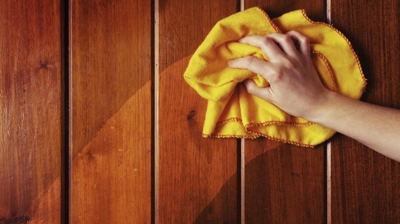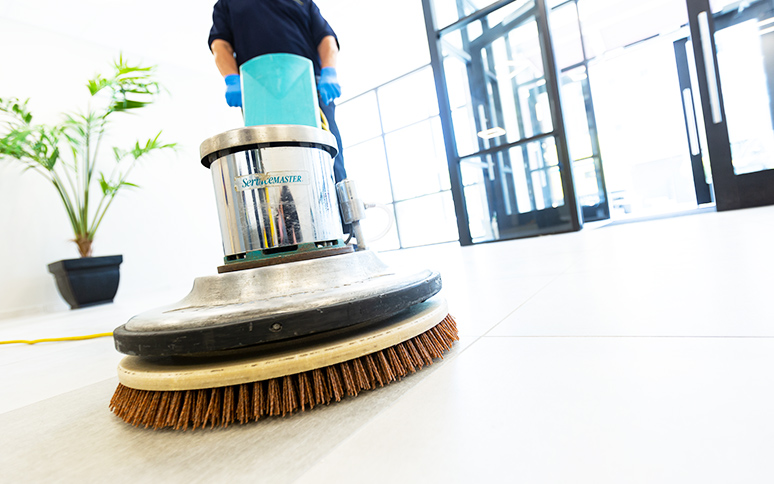Winter is Over! Your Spring Cleaning Guide to Flooring Maintenance
You’ve survived the cold grip of winter’s icy hands, and now spring has arrived to provide some sweet relief. But as a business owner, before you head outside to enjoy the magnificent weather, you need to check a few commercial maintenance tasks off your to-do list. Just like you (and your home), your commercial property also suffered through winter’s harsh weather – especially your floors.
The experts at ServiceMaster Clean created this simple spring cleaning guide to make commercial floor maintenance easy. Use our tips and step-by-step instructions to mitigate snow and water damage and restore your facility’s floors to their former glory – just in time for spring.
Hard Surfaces
The rock salt and ice melt you use when snow starts piling up outside can easily get tracked indoors and onto your floors. If you used sand for traction over snow and ice, you can expect to find the gritty grains inside, too. Especially noticeable near the front entrance, the debris tracked inside during winter can quickly cause damage to the surface of your floors. Small particles of sand, salt and snow melt will dull and scratch the surface of even the most durable floors, and the chemical debris can actually strip protective finishes and leave unsightly residue behind.
Following proper winter maintenance procedures will go a long way toward preserving and protecting your floors, but once the worst of the weather has passed, you’ll want to perform a deep clean to repair and restore them to their former glory. Here’s how.
How to Clean Tile & Hardwood
There are many types of tile and hardwood commercial floors that can require slightly different cleaning techniques. This section offers a general guide to clean and maintain most hard floors in commercial buildings, but you should always refer to your flooring manufacturer’s manual and test cleaning solutions in a small, inconspicuous area before starting to avoid large or costly damages.
- Sweep away visible debris to remove larger particles from the floor’s surface.
- Use a semi-acidic floor cleaner or mix vinegar with water to neutralize and dissolve any remaining salt residue. Refer to product instructions for dilution ratios.
- Once the salt residue is suspended in the cleaner, use a mop to absorb the liquid.
- If your floor’s finish has been damaged, use a stripper solution to cleanly remove it. Apply the solution and let it sit for about 15 minutes. Add more as needed. Refer to the specific stripping product’s label for exact instructions. Safety Tip: Use floor fans and open windows to improve ventilation when working with harsh chemicals.
- Use a little elbow grease and a scrubber to agitate the surface and strip the remaining finish. Then, mop up the liquid.
- Mop the floor again with clean water to remove any lingering chemicals from the cleaner and stripping solution.
- Let the floor dry completely.
- Finally, apply two coats of sealing and a few fresh coats of finish for a floor that looks as good as new.
Soft Surfaces
Soft surfaces are equally affected by salt, mud, and snow or ice melt – if not more so. Salt residue will leave its characteristic white powdery residue on carpet surfaces, while melting snow and chemicals can soak deep into the fibers and even the padding. If winter water damage goes untreated, mold and mildew can easily grow and spread, leading to much bigger problems in the long run.
How to Clean Commercial Carpets
Add absorbent doormats, umbrella stands and coat racks to your building’s entrance to reduce the amount of water that can reach your carpeted areas during the winter season. When the weather warms up, follow these steps to give your carpets a complete post-winter cleaning.
Vacuum visible dirt particles and debris.
Use water and a residue-removing cleaning solution to deeply clean your carpet. Let the solution soak into the carpet for approximately 15 minutes. Refer to the specific product for dilution ratios.
Use a wet vacuum to remove the solution, oils and dissolved residue.
Rinse with clean water and suction it out with the wet vacuum. You may find that you need to repeat steps 2-4 depending on the amount of damage.
Use carpet fans to completely dry the floor.
The time, energy and heavy equipment required to effectively clean commercial carpets can be a burden for any business owner. If you need spring carpet cleaning or hard floor maintenance, let the experts at ServiceMaster Clean do the dirty work for you. We’ll design a custom commercial floor maintenance program to suit your unique needs and budget so you can get back to business – and enjoy the beautiful weather while you’re at it.






